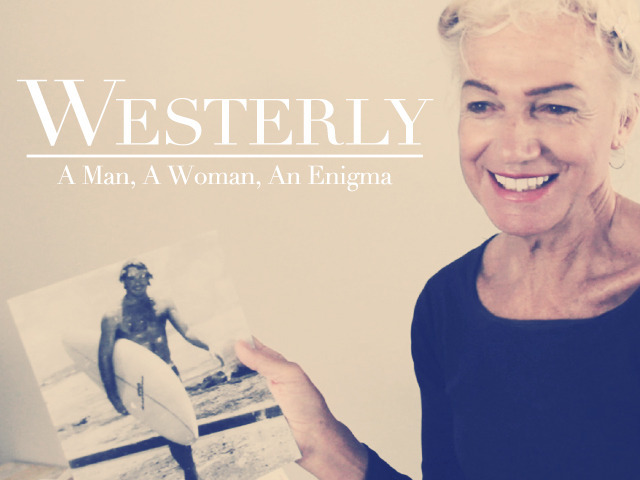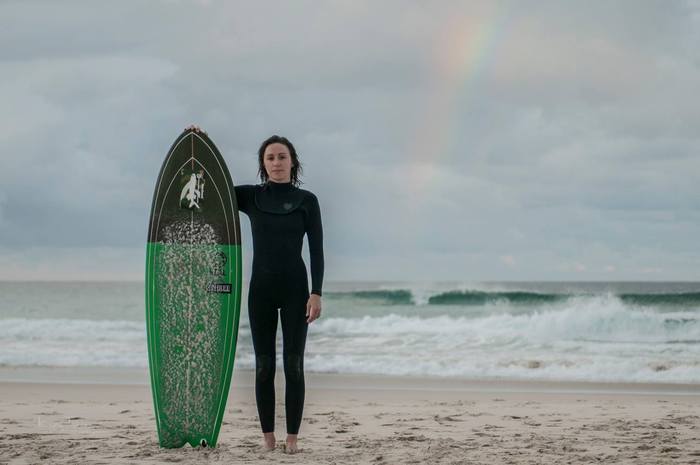Surfing and crowdfunding: a capital idea
In March this year Kickstarter passed $1 billion in funds pledged for successful projects. It was an auspicious milestone for the original crowdfunding website, and impressive too as it only began trading in 2009. When it started the online community was experiencing one of its many subtle shifts, the kind that roll around every few years and change how we engage with the 'net. This time it was the realisation of collective power – how disparate online communities can be accessed and resources pooled - and the owners of Kickstarter were among the first entrepreneurs to tap into it.
Any venture that doesn't fit an existing business model is an ideal candidate for crowdfunding, so among the first projects to utilise Kickstarter were art and cultural projects, and also new media start ups. According to Kickstarter the early adopters were predominantly younger, tech savvy users who held a pronounced DIY ethos. In the intervening years the stereotype has been somewhat diluted, crowdfunding is now an acceptable form of capital raising for all ages and almost any project. However, the desire to do something yourself remains unchanged.
Surfers may have been slow on the uptake but the number of crowdfunded surfing projects has been steadily increasing. As a sport – or lifestyle, or art, or sub-culture, or whatever else you want to call it – surfing is an ideal target for crowdfunding. And the difficulty in defining surfing is part of the cause: surfing has fractured into myriad sub-groups each with separate values and ideas. Aside from time spent in the water the tribes have little in common with each other. It's into just such a social setting that crowdfunding thrives by linking creators with an otherwise hard to find audience.
 Darius Devas is a Melbourne-based artist, filmmaker, and surfer. He used a crowdfunding site, in his case Indiegogo, to raise capital for his most recent project, an abstract surf film called Within. Devas already had an established fan base - “Friends mostly” he modestly admits – who connect with his work and understand what he's capable of. They made up the majority of his donors, yet the largest donor was unknown to Devas. “I worked very hard on my crowdfunding," he says. "I treated it as a job and ended up reaching all sorts of people. She [the donor] just liked what I proposed. It struck a chord with her.”
Darius Devas is a Melbourne-based artist, filmmaker, and surfer. He used a crowdfunding site, in his case Indiegogo, to raise capital for his most recent project, an abstract surf film called Within. Devas already had an established fan base - “Friends mostly” he modestly admits – who connect with his work and understand what he's capable of. They made up the majority of his donors, yet the largest donor was unknown to Devas. “I worked very hard on my crowdfunding," he says. "I treated it as a job and ended up reaching all sorts of people. She [the donor] just liked what I proposed. It struck a chord with her.”
Beyond capital raising, crowdfunding provides other benefits. Tony Been is the Australian representative of Indiegogo, he says that the feedback you get from crowdsourcing can provide invaluable help. “Say you want to raise $10,000 for a new model of sunglasses but you only raise $9,000. Even if you raise less than you want, the real benefit is the market validation that you get from people who have shown they're interested in your product.”
 It's something Jamie Brisick, creator of an upcoming documentary on Peter Drouyn/Westerly Windina attests to. The working title of his film is Westerly: A Man, A Woman, An Enigma, and given the story he believes he would've found funding regardless. Yet he chose Kickstarter and was surprised by the unexpected marketing benefits. “It helped us to find out who our audience was,” said Brisick. Also, crowdfunding is largely driven by social media which, as Jamie says, “means it also works as a PR vehicle for the film.” It allowed him to speak to the potential audience and outline the nature of the project. In this case Brisick told them his film, “was more than just a surf story, it was a human interest story.” The documentary easily reached its Kickstarter total, is currently being edited, and should be released in Spring.
It's something Jamie Brisick, creator of an upcoming documentary on Peter Drouyn/Westerly Windina attests to. The working title of his film is Westerly: A Man, A Woman, An Enigma, and given the story he believes he would've found funding regardless. Yet he chose Kickstarter and was surprised by the unexpected marketing benefits. “It helped us to find out who our audience was,” said Brisick. Also, crowdfunding is largely driven by social media which, as Jamie says, “means it also works as a PR vehicle for the film.” It allowed him to speak to the potential audience and outline the nature of the project. In this case Brisick told them his film, “was more than just a surf story, it was a human interest story.” The documentary easily reached its Kickstarter total, is currently being edited, and should be released in Spring.
At the other end of the process is Angie Takanami, a Byron Bay journalist who recently launched a Kickstarter appeal. Double Barrel is the name of her proposed project, which is described on her Kickstarter page as “a surf documentary following a Peruvian surfer's dream of turning a crumbling oil-dominated surf town to a sustainable surf village.”
 The purpose of the film is to raise awareness about environmental issues in Peru and Takanami has found that this aspect has already begun. “It helps get your project out there in front of many eyes before it even kicks off the ground.” And much like Jamie Brisick, Takanami says it “gives you a good idea of how people feel about what you are doing.” And how do people feel? “I’ve learnt that surfers really do care about what’s going on with our oceans...and I’m also learning they have a great interest in seeing the everyday little guy beat the odds.”
The purpose of the film is to raise awareness about environmental issues in Peru and Takanami has found that this aspect has already begun. “It helps get your project out there in front of many eyes before it even kicks off the ground.” And much like Jamie Brisick, Takanami says it “gives you a good idea of how people feel about what you are doing.” And how do people feel? “I’ve learnt that surfers really do care about what’s going on with our oceans...and I’m also learning they have a great interest in seeing the everyday little guy beat the odds.”
The process hasn't been easy though. Much like Darius Devas, Takanami says creating, organising, and then driving her Kickstarter appeal “has been a full time job.” At present Takanami's appeal hasn't reached its target though it still has 12 days to go. “It’s a massive gamble and can put a real stress on your body.”
It may be a new way to access funds, but anyone who thinks crowdfunding is an easy way to get money should read that and think twice.


Comments
Aussie surfers now also have an Aussie platform with which to crowd fund surfing related projects.
iPledg (www.ipledg.com) is giving away success-fee-free campaigns to the first surfing related projects to list on their site this month
Simply lodge your camapign and email us at surf@ipledg.com and we will "wave" our fees (ok - a bad pun, but a great offer!)
Hmmm...very close to spam Mr iPledg, but I'll let you off cos no other bastard has commented on here.
I will Stu, the bastard...;)
What project are you going to delve into...?
Good call Stu ... would you do the same if it was not surf related, or surf link? But, then again, I'm sure someone could come up with a bad pun to link Viagra and surfing ...
Back to the topic though ...
I'm always curious as to what happens when a 'project' becomes profitable. Either as a cash flow positive venture, or as a sale-able valuable asset? Who takes the profit, the cash?
Do the 'founders' just milk the project, taking wages, having expenses paid, bleeding it until nothing is left? What transparency is there? Do people care?
Charities have become more 'accountable' for their "admin and overheads" so more money goes to the purpose for which it was donated. Do people expect the same with these 'crowd funding' projects?
Who takes the profit? The inventors or creators do. The people who pledge are under no obligation to give, they generally do so because they want to see an idea become reality. It can't be equated with shareholders buying shares and seeking dividends.
Too true. Under current Aus law, pledges can't be rewarded with financial gain, shares, or a return. They can, however, get tangible rewards in return for their pledges.
As for a project becoming "profitable", do you mean "over-funded", or funded to the point where they start to then operate and then make a profit? I can help answer those type of questions, but just need to be clear on what you are asking
Ok, what are the 'tangible rewards' for those that pledge?
What transparency are the inventors/creators required to provide?
What percentage rate of those that seek crowd funding actually come to fruition?
Tangible rewards are things like the product that the company will make, given as rewards - e.g. if you give someone a surf board or lessons for pledging a certain amount.
When we set up iPledg, we spent a lot of time with ASIC, ACCC and the Dept of Fair Trading working through probity issues, mainly around transparency. We require the project creators to have a PayPal account, piggybacking off their probity issues and helping to verify who the project creator is and where we can get a hold of them if we need to. People pledging also need to sign up, although there is less of a requirement on the person "giving" than the requirements around the recipient
Currently worldwide stats indicate around 45% of crowd funding campaigns are successfully funded
I hope this all helps
hmmm... I wonder if this is a viable way to fund the building/renovation of surfing reefs?
Very possibly
It is all determined by the project creator's ability to engage a crowd
Let's give it a try - there's nothing to lose, no cost, just an investment of some effort to spread the word and see if we can get people to support it
Peter Drouyn Story still shocks me and other surfers. Where is he gone.